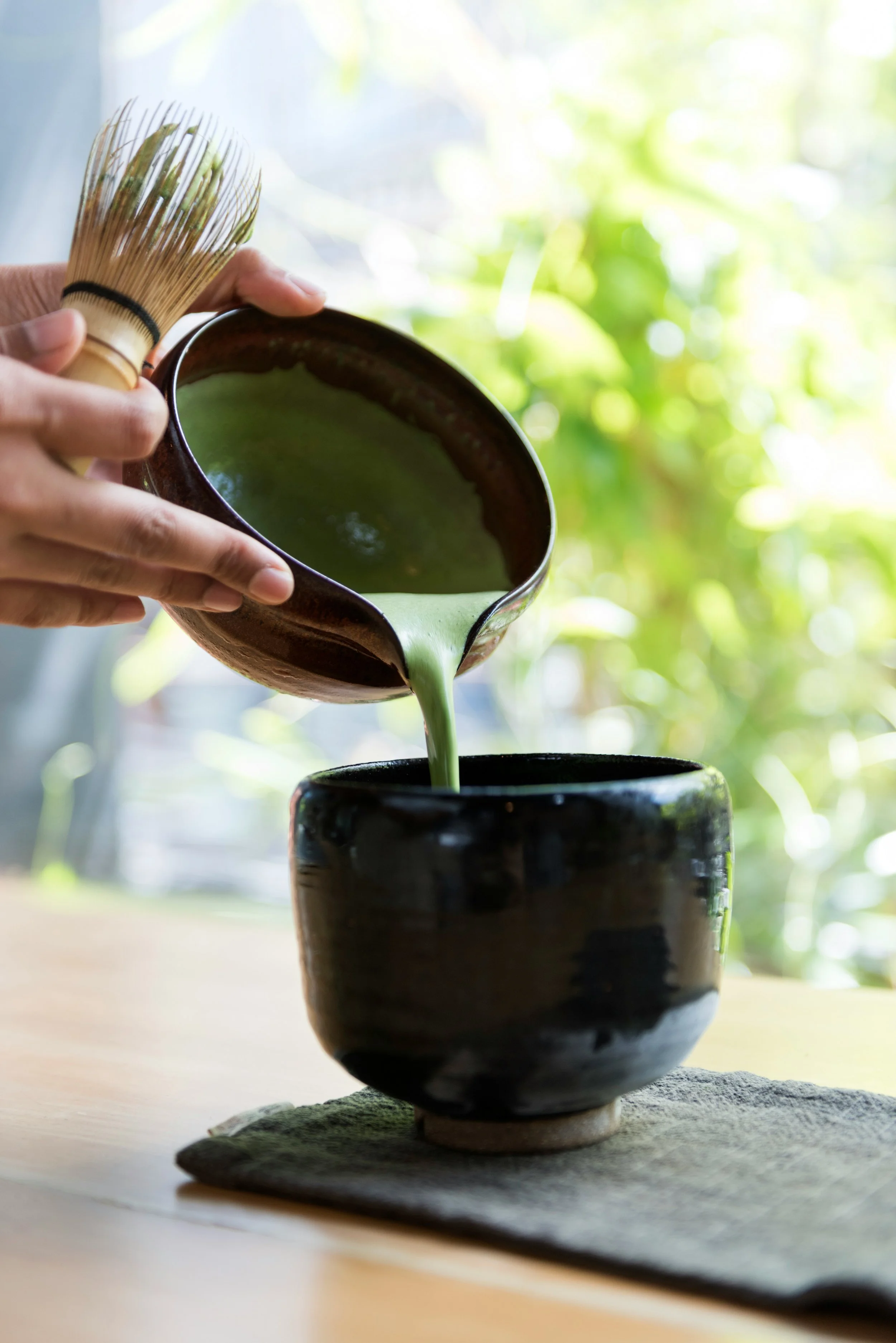Matcha vs. Coffee: The Wellness Choice We’re Making This Season
I’ll admit it: I resisted matcha for years. Every cup I tried tasted like dirt and grass, and I thought, why would I give up my beloved coffee for this? I love coffee—the smell, the depth of flavor, the warmth of a mug in my hands. It’s a ritual I’ve cherished for years.
And yet…sometimes that same ritual left me feeling a little off. The heart-thumping rush, the short fuse, the afternoon slump—it was hard to ignore. I wanted a way to keep the comfort of my morning ritual without the rollercoaster of highs and lows.
That’s when curiosity about matcha crept back in. I didn’t need to give up coffee completely—I just wanted another option. And when I discovered Societea’s ceremonial-grade matcha, sourced directly from a family farm in Uji, Japan, everything changed. Smooth, vibrant, never bitter—it was the first cup that finally lived up to the hype.
My (Messy) Journey from Coffee to Matcha
Part of my resistance came from bad matcha. Early experiences were bitter, earthy, and disappointing. Coffee, meanwhile, wasn’t always working either—the all-or-nothing energy spike just wasn’t sustainable.
Curious why so many people swore by matcha, I gave it a proper chance. To my surprise, making it was actually simpler than my pour-over routine: whisk, hot water, done. No grinding beans, no filters, no endless cleanup.
I still enjoy coffee (Purity’s 2/3 decaf is my current favorite), but now I’ve found a rhythm that feels better for me. Coffee during the follicular and ovulatory days of my cycle, matcha in the others. It’s less about quitting one and more about finding balance in both.
Why Matcha Feels Different
Here’s the science behind why matcha energy feels calmer and more sustainable than coffee:
Gradual energy release: Matcha has about half the caffeine of coffee, but because you consume the whole leaf, it’s absorbed more slowly.
L-theanine for focus: This amino acid smooths the caffeine release, leaving you alert without the edginess.
No stress spike: Coffee can sometimes overstimulate stress hormones; matcha keeps your nervous system steady.
Antioxidant-rich: Packed with EGCG, matcha supports metabolism, skin, and overall wellness.
It’s not just “less caffeine.” It’s a different experience entirely.
How I Made the Switch (Without Missing My Ritual)
I didn’t overhaul my mornings overnight. Instead, I experimented:
Morning Boost: Whisked matcha in hot water and sipped slowly—it set the tone for calmer, more patient mornings.
Midday Reset: Creamy matcha lattes gave me focus that carried me through the day without keeping me up at night.
Optional Evening Ritual: A lighter serving created a peaceful pause that never tipped into overstimulation.
It was less about replacing coffee and more about expanding my options.
Why Societea?
Quality matters. Societea’s founder traveled to Uji, Japan, to partner directly with farmers who are stewards of the land. The result is a ceremonial-grade powder that’s smooth, vibrant, and never bitter. After years of thinking matcha wasn’t for me, I finally understood what all the fuss was about.
I’ll be honest: I’ll always be curious to try other high-end matchas, but Societea has earned a permanent place on my shelf.
Coffee vs. Matcha: The Difference I Felt
Coffee will always have a place in my life—but matcha offers something coffee can’t. My mornings feel steadier, my focus less reactive, and my energy stretches further into the day. What started as a simple swap has grown into a grounding ritual that feels genuinely supportive.
Tips for Getting Started with Matcha
Use no more than 1 teaspoon — one serving is all you need for balanced flavor and energy.
Start with warm water (175°F/80°C) to protect the delicate flavor. Add water or warm milk from there.
Whisk properly — a bamboo whisk or frother creates the creamy, frothy texture that makes the ritual so satisfying.
Common Questions About Matcha
Does matcha have less caffeine than coffee?
Yes—typically about half. But thanks to L-theanine, the energy is smoother and longer-lasting than coffee’s sharp spike.
Can it help with pre-period energy and mood?
Many people (myself included) notice less irritability and more stable energy when swapping coffee for matcha in the days leading up to their cycle.
What should good matcha taste like?
Not grassy or bitter. High-quality ceremonial matcha should be smooth, vibrant, and slightly sweet, with a velvety finish.
Final Thoughts: Why Matcha Works for Me
Bringing matcha into my mornings has been a small shift with a big impact. The warmth, ritual, and sensory pleasure are still there—but now with steadier energy and a calmer focus that carry me through the day.
If you’ve ever wondered whether your mornings could feel a little more grounded, matcha is worth exploring. For me, Societea’s ceremonial-grade matcha isn’t just a drink—it’s a nourishing ritual that helps me feel balanced, clear, and ready for the day ahead.
